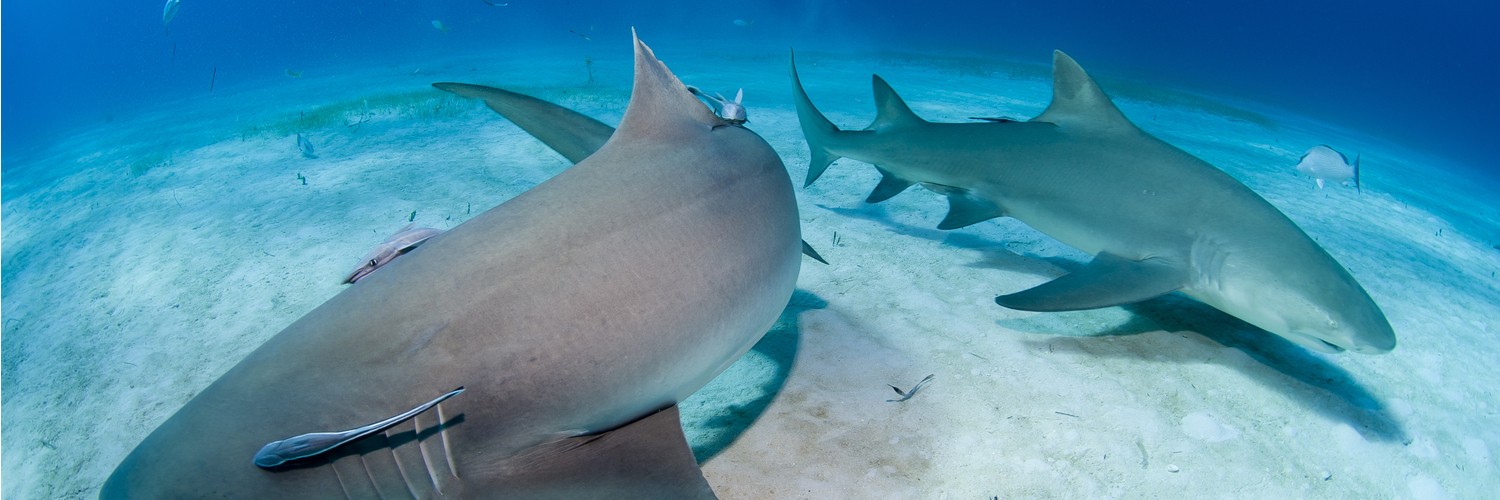Human eyesight, while impressive, is not the best in the animal kingdom; various creatures possess unique visual adaptations tailored to their environments. COMPARE.EDU.VN provides a comprehensive comparison, helping you understand these differences and appreciate the diverse ways animals perceive the world. Explore visual acuity, color perception, and night vision capabilities across species.
1. Understanding Human Vision: A Baseline
Human eyesight is a marvel of biological engineering, capable of processing a vast amount of visual information. But how does it stack up against the visual systems of other creatures?
1.1. The Strengths of Human Vision
Humans are trichromatic, meaning we have three types of cone cells in our retinas that allow us to perceive a wide range of colors (red, green, and blue). This trichromatic vision enables us to differentiate between millions of different hues, a capability that’s essential for various tasks, from appreciating art to identifying ripe fruits. Our visual acuity, typically around 20/20, allows us to see fine details at a reasonable distance, crucial for activities like reading and recognizing faces.
1.2. Limitations of Human Vision
Despite its strengths, human vision has limitations. Our night vision is relatively poor compared to nocturnal animals, and our peripheral vision isn’t as wide as that of some prey animals. We also lack the ability to see ultraviolet light, which is visible to many insects and birds.
2. Cat Vision vs. Human Vision: A Nocturnal Advantage
Cats are renowned for their ability to see in low-light conditions, making them formidable nocturnal hunters. How does their vision compare to ours?
2.1. Superior Night Vision
Cats have a higher concentration of rod receptors in their retinas, which are more sensitive to dim light. They also possess a tapetum lucidum, a reflective layer behind the retina that enhances light capture. According to a study by the University of Pennsylvania’s School of Veterinary Medicine, this adaptation allows cats to see in approximately one-sixth the amount of light that humans need.
2.2. Limited Color Perception
While it’s a common misconception that cats see only in black and white, they do have some color vision. However, they are believed to be dichromats, meaning they have only two types of cone cells (blue and green). Reds and pinks can be confusing for cats, and purple may appear as another shade of blue.
3. Dog Vision vs. Human Vision: A Dichromatic World
Dogs, like cats, have a different visual experience than humans. Their vision is adapted for different purposes, such as hunting and detecting movement.
3.1. Dichromatic Color Vision
Dogs are also dichromats, with vision most similar to a human with red-green color blindness. They have two types of cone cells in their retinas, allowing them to see blues and yellows, but they struggle to distinguish between reds and greens.
3.2. Lower Visual Acuity
Dogs are generally more nearsighted than humans. According to Psychology Today, a special test custom-made for dogs puts them at around 20/75 vision. This means a dog can see at 20 feet what a human with normal vision can see at 75 feet.
4. Horse Vision vs. Human Vision: Panoramic Views
Horses, as prey animals, have evolved a visual system that prioritizes wide-angle vision and the ability to detect movement.
4.1. Wide Field of Vision
Horses boast an impressive 350 degrees of monocular vision, thanks to the position of their eyes on the sides of their head. This allows them to see almost all the way behind themselves, a crucial adaptation for detecting predators.
4.2. Similar Color Perception to Dogs
Like dogs, horses cannot perceive the difference between red and green. They also have a similar rate of vision to a dog, at around 20/60.
5. Eagle Vision vs. Human Vision: The King of Acuity
Eagles and other birds of prey have some of the most exceptional eyesight in the animal kingdom. Their visual acuity is far superior to that of humans, allowing them to spot prey from incredible distances.
5.1. Exceptional Visual Acuity
Eagles have retinas packed with light-detecting cone cells and a much deeper fovea, a cone-rich structure in the back of the eye that acts like a telephoto lens. According to the Journal of Comparative Physiology A, these characteristics are believed to give eagles a visual acuity of 20/5 or even 20/4. This means an eagle can see something at 20 feet that a human with normal vision would need to be 4 or 5 feet away to see.
5.2. Ability to See Ultraviolet Light
Eagles can see colors more vividly than humans, and they can even see ultraviolet light. This ability allows them to spot traces of urine left by prey, making them highly efficient hunters.
The image showcases eagle vision compared to human vision, emphasizing the superior visual acuity and color perception of eagles.
6. Shark Vision vs. Human Vision: Underwater Adaptation
Sharks, as apex predators of the ocean, have evolved unique visual adaptations for hunting in underwater environments.
6.1. Similar Eye Structure to Humans
Shark eyes share many structural similarities with human eyes. In fact, shark corneas are sometimes used in cornea replacement surgery in humans.
6.2. Adaptations for Low-Light Conditions
To see better in dark water, sharks have a layer of mirrored crystals behind their retina called the tapetum lucidum. These crystals give light another chance to be caught by the retina, offering sharks up to 10 times the vision of humans in clear water.
7. Bug Vision vs. Human Vision: Compound Eyes
Insects have compound eyes, which are made up of many individual lenses. This gives them a different visual experience than humans.
7.1. Compound Eyes
Insects have more eyes than humans. Butterflies have four eyes, most insects have five, and spiders have eight. Houseflies have 4,000 lenses in each eye, while a dragonfly’s eye contains about 30,000 lenses.
7.2. Lower Visual Acuity
The insect compound eye is like having lots of little eyes looking in different directions, but each little eye doesn’t see very well. The human eye can swivel and focus, resulting in higher quality vision. The acuity of a human eye is about 100 times better than that of the best compound eye.
8. Comparing Visual Capabilities: A Comprehensive Table
To better illustrate the differences in visual capabilities, here’s a comparison table:
| Feature | Human | Cat | Dog | Horse | Eagle | Shark | Insect (Dragonfly) |
|---|---|---|---|---|---|---|---|
| Color Vision | Trichromatic | Dichromatic | Dichromatic | Dichromatic | Tetrachromatic | Similar to Humans | Limited Color |
| Night Vision | Poor | Excellent | Good | Good | Good | Excellent | Poor |
| Visual Acuity | 20/20 | Estimated 20/100 – 20/200 | 20/75 | 20/60 | 20/5 or 20/4 | Good | Low |
| Field of Vision | 180 degrees | 200 degrees | 240 degrees | 350 degrees | Varies | Varies | 360 degrees |
| UV Light Detection | No | No | No | No | Yes | No | Varies |





9. Factors Influencing Animal Vision
Animal vision is heavily influenced by environmental factors and evolutionary adaptations.
9.1. Environmental Adaptations
Animals living in different environments have evolved visual systems that are best suited to their specific needs. For example, nocturnal animals have better night vision, while birds of prey have superior visual acuity.
9.2. Evolutionary Pressures
Evolutionary pressures also play a significant role in shaping animal vision. Predators often have visual systems that prioritize acuity and depth perception, while prey animals need wide-angle vision to detect threats.
10. The Evolutionary Perspective on Vision
The evolution of vision across the animal kingdom is a testament to the power of natural selection. Each species has developed visual capabilities that optimize their survival and reproductive success in their unique ecological niches.
10.1. The Role of Natural Selection
Natural selection favors individuals with visual traits that enhance their ability to find food, avoid predators, and navigate their environment. Over time, these traits become more common in the population, leading to the diverse array of visual systems we see today.
10.2. Convergence and Divergence
Evolutionary convergence can lead to similar visual adaptations in unrelated species that occupy similar ecological niches. For example, both cats and owls have excellent night vision, despite belonging to different taxonomic groups. Conversely, evolutionary divergence can result in distinct visual systems in closely related species that have adapted to different environments.
11. How is Visual Acuity Measured?
Visual acuity is typically measured using a Snellen chart, which consists of rows of letters or symbols of decreasing size. The standard measurement is expressed as a fraction, such as 20/20.
11.1. The Snellen Chart
The Snellen chart is designed to assess how well a person can see at a distance of 20 feet. A person with 20/20 vision can see clearly at 20 feet what a person with normal vision should be able to see at 20 feet.
11.2. Understanding the Ratios
A person with 20/40 vision can see at 20 feet what a person with normal vision can see at 40 feet. Conversely, a person with 20/10 vision has better-than-normal visual acuity, being able to see at 20 feet what a person with normal vision would need to be 10 feet away to see.
12. The Science Behind Color Vision
Color vision is made possible by specialized cells in the retina called cone cells. These cells are sensitive to different wavelengths of light, allowing us to perceive a wide range of colors.
12.1. Cone Cells and Wavelengths
Humans have three types of cone cells, each sensitive to a different range of wavelengths: short (blue), medium (green), and long (red). The brain interprets the signals from these cone cells to create our perception of color.
12.2. Variations in Color Vision
Not all animals have the same number of cone cells. Some animals, like dogs and cats, are dichromats, while others, like birds and some insects, are tetrachromats, possessing four types of cone cells and the ability to see ultraviolet light.
13. The Impact of Light on Vision
Light plays a crucial role in vision, and different animals have adapted to varying light conditions.
13.1. Rod Cells and Low-Light Vision
Rod cells are another type of photoreceptor cell in the retina, responsible for vision in low-light conditions. Animals with a high concentration of rod cells, like cats and owls, have excellent night vision.
13.2. Diurnal vs. Nocturnal Adaptations
Diurnal animals, which are active during the day, tend to have more cone cells and better color vision. Nocturnal animals, which are active at night, have more rod cells and better night vision.
14. Common Misconceptions About Animal Vision
There are several common misconceptions about how animals see the world.
14.1. Do Dogs See in Black and White?
One of the most persistent myths about animal vision is that dogs see in black and white. In reality, dogs have dichromatic vision, meaning they can see some colors, but their color perception is limited compared to humans.
14.2. Is Eagle Vision Really That Good?
While it’s often said that eagles have incredibly sharp vision, it’s important to understand the specifics. Eagles have excellent visual acuity, allowing them to see small objects from great distances, but their color vision is not necessarily superior to that of humans.
15. Technological Advancements in Vision Research
Advancements in technology have allowed scientists to study animal vision in greater detail than ever before.
15.1. Electroretinography (ERG)
Electroretinography (ERG) is a technique used to measure the electrical activity of the retina in response to light stimulation. This can provide valuable information about the function of photoreceptor cells and other retinal components.
15.2. Optical Coherence Tomography (OCT)
Optical coherence tomography (OCT) is a non-invasive imaging technique that allows scientists to visualize the layers of the retina in detail. This can be used to study the structure of the retina and identify any abnormalities.
16. Maintaining and Improving Human Eyesight
While human eyesight may not be the best in the animal kingdom, there are steps we can take to maintain and even improve our vision.
16.1. Regular Eye Exams
Regular eye exams are essential for detecting and treating vision problems early. A comprehensive eye exam can identify conditions like nearsightedness, farsightedness, astigmatism, and glaucoma.
16.2. Healthy Lifestyle Choices
A healthy lifestyle, including a balanced diet and regular exercise, can also contribute to good vision. Certain nutrients, like vitamins A, C, and E, as well as zinc and omega-3 fatty acids, are particularly important for eye health.
17. Vision in Different Environments: Aquatic vs. Terrestrial
The environment in which an animal lives has a significant impact on the evolution of its visual system.
17.1. Aquatic Vision
Animals that live in aquatic environments face unique challenges when it comes to vision. Water absorbs light, particularly red and orange wavelengths, which can make it difficult to see clearly. Many aquatic animals have evolved adaptations to overcome these challenges, such as specialized lenses and retinas.
17.2. Terrestrial Vision
Terrestrial animals have evolved visual systems that are well-suited to seeing in air. The air is much less dense than water, which allows light to travel more easily. Terrestrial animals often have better color vision and visual acuity than aquatic animals.
18. Artificial Vision: A Glimpse into the Future
Artificial vision technologies are being developed to help people with vision loss regain some of their sight.
18.1. Retinal Implants
Retinal implants are electronic devices that are surgically implanted into the eye to stimulate the retina. These devices can help people with certain types of vision loss, such as retinitis pigmentosa, to perceive light and shapes.
18.2. Bionic Eyes
Bionic eyes are more advanced artificial vision systems that use cameras and microprocessors to process visual information and transmit it to the brain. These devices are still in the early stages of development, but they hold great promise for restoring sight to people with severe vision loss.
19. The Importance of Vision in Animal Behavior
Vision plays a critical role in many aspects of animal behavior, including foraging, mating, and predator avoidance.
19.1. Foraging Strategies
Many animals rely on vision to find food. Birds of prey use their sharp eyesight to spot prey from great distances, while bees use their color vision to locate nectar-rich flowers.
19.2. Mating Rituals
Vision also plays a role in mating rituals. Many animals use visual displays, such as colorful plumage or elaborate dances, to attract mates.
20. Vision and its Role in Conservation Efforts
Understanding animal vision is also essential for conservation efforts.
20.1. Habitat Preservation
Preserving natural habitats is critical for maintaining the visual environments that animals depend on. Protecting forests, wetlands, and other ecosystems can help ensure that animals have access to the resources they need to survive.
20.2. Reducing Light Pollution
Reducing light pollution is also important for protecting animal vision. Artificial light can disrupt the natural behaviors of nocturnal animals, making it difficult for them to find food, avoid predators, and reproduce.
Discover more fascinating comparisons and make informed decisions at COMPARE.EDU.VN, where we provide detailed analyses across various topics.
FAQ: Frequently Asked Questions About Animal Vision
1. What is visual acuity?
Visual acuity refers to the sharpness or clarity of vision. It is typically measured using a Snellen chart.
2. What is color vision?
Color vision is the ability to distinguish between different wavelengths of light, allowing us to perceive a wide range of colors.
3. What is night vision?
Night vision is the ability to see in low-light conditions. Animals with good night vision have a high concentration of rod cells in their retinas.
4. Are dogs really color blind?
Dogs are not completely color blind, but they have dichromatic vision, meaning they can see some colors, but their color perception is limited compared to humans.
5. Do eagles really have the best eyesight?
Eagles have exceptional visual acuity, allowing them to see small objects from great distances. They also have the ability to see ultraviolet light.
6. How do insects see the world?
Insects have compound eyes, which are made up of many individual lenses. This gives them a different visual experience than humans.
7. What is the tapetum lucidum?
The tapetum lucidum is a reflective layer behind the retina that enhances light capture. It is found in many nocturnal animals, such as cats and sharks.
8. How is visual acuity measured?
Visual acuity is typically measured using a Snellen chart, which consists of rows of letters or symbols of decreasing size.
9. What are cone cells?
Cone cells are specialized cells in the retina that are responsible for color vision.
10. What are rod cells?
Rod cells are another type of photoreceptor cell in the retina, responsible for vision in low-light conditions.
At COMPARE.EDU.VN, we strive to provide accurate and comprehensive comparisons to help you make informed decisions. Explore our site for more insights and comparisons. Contact us at 333 Comparison Plaza, Choice City, CA 90210, United States. Reach out via Whatsapp at +1 (626) 555-9090 or visit our website at COMPARE.EDU.VN for more information.
Ready to make informed decisions?
Visit compare.edu.vn today to explore detailed comparisons and discover the best choices for your needs. Our comprehensive analyses and user-friendly interface make it easy to find the information you need. Start comparing now and make smarter decisions!